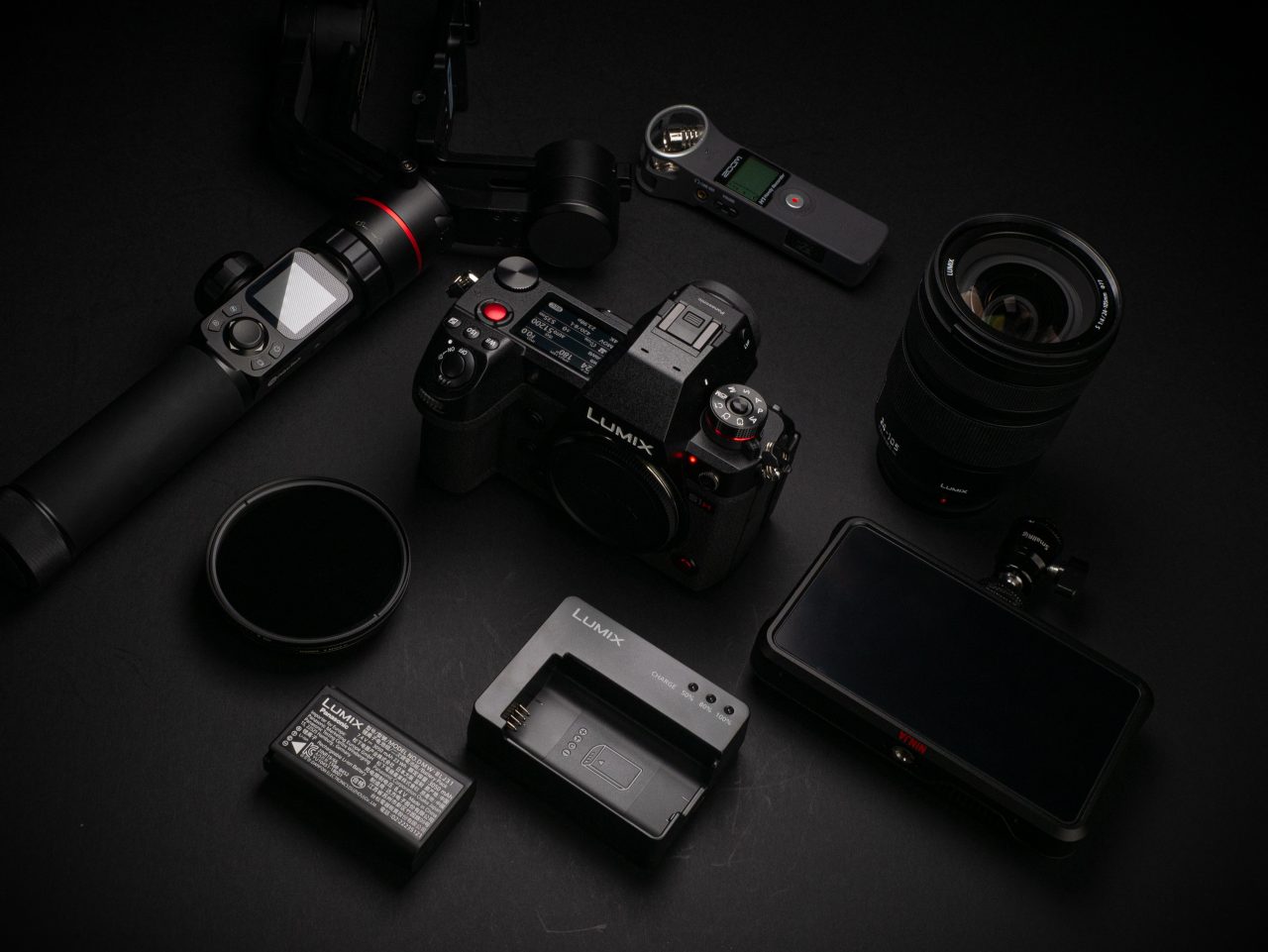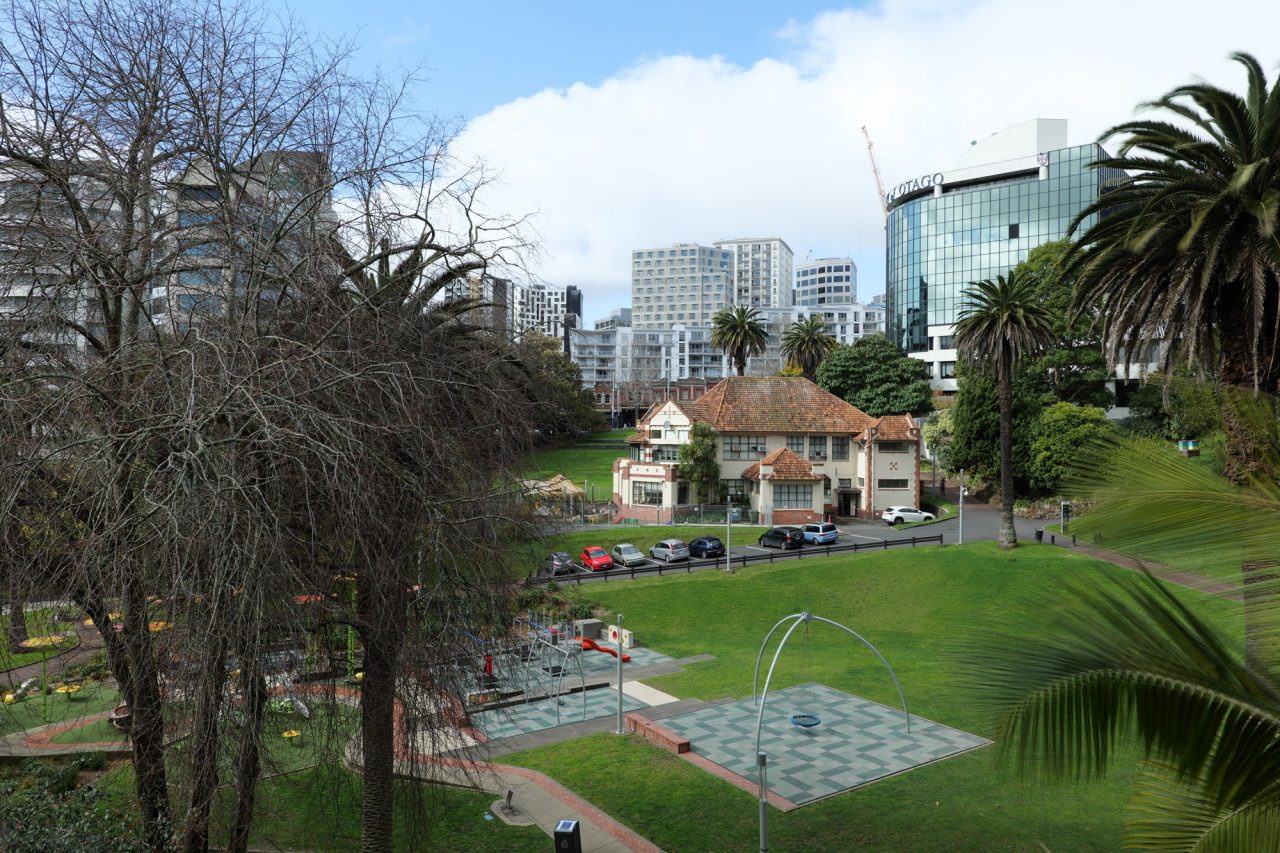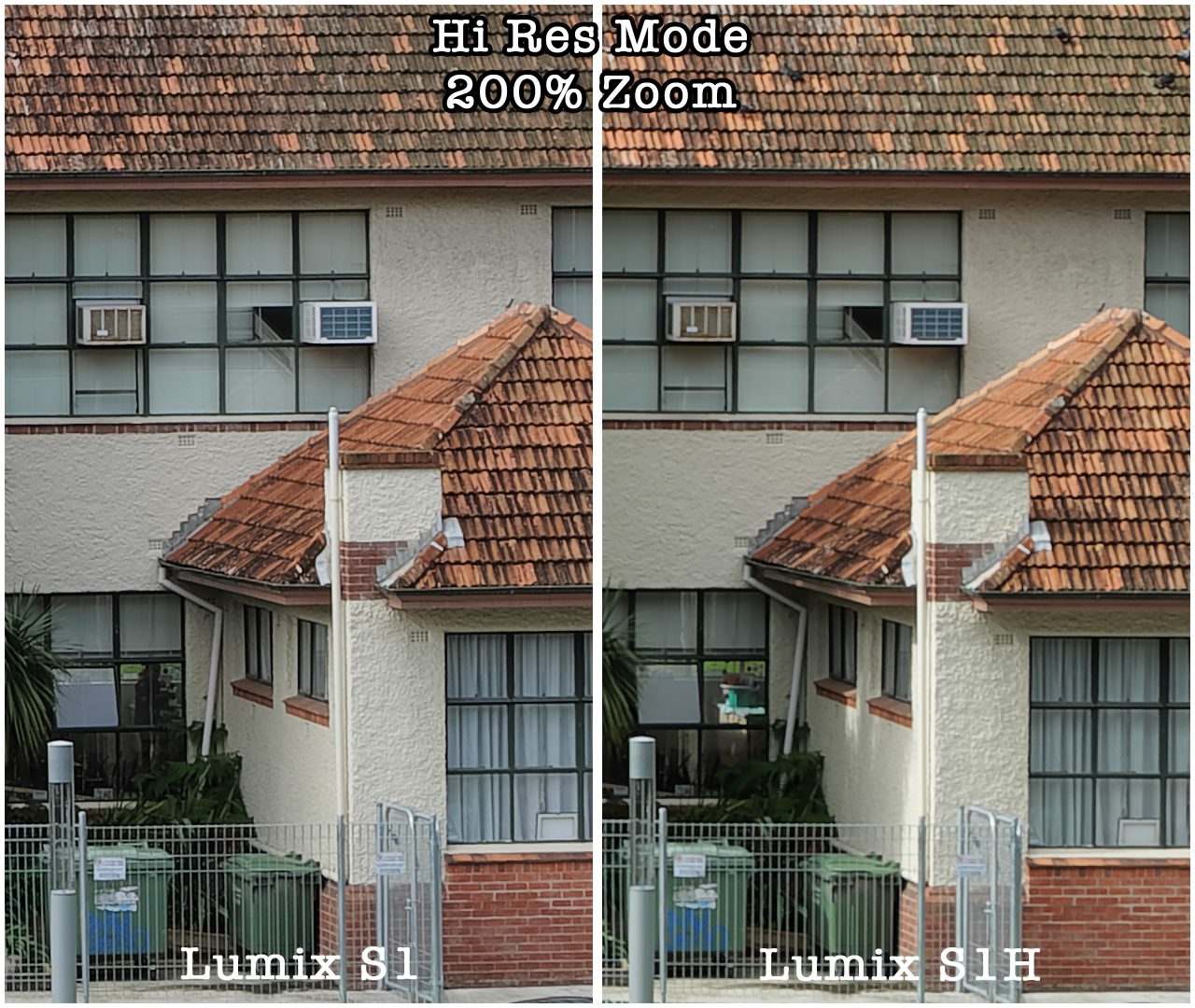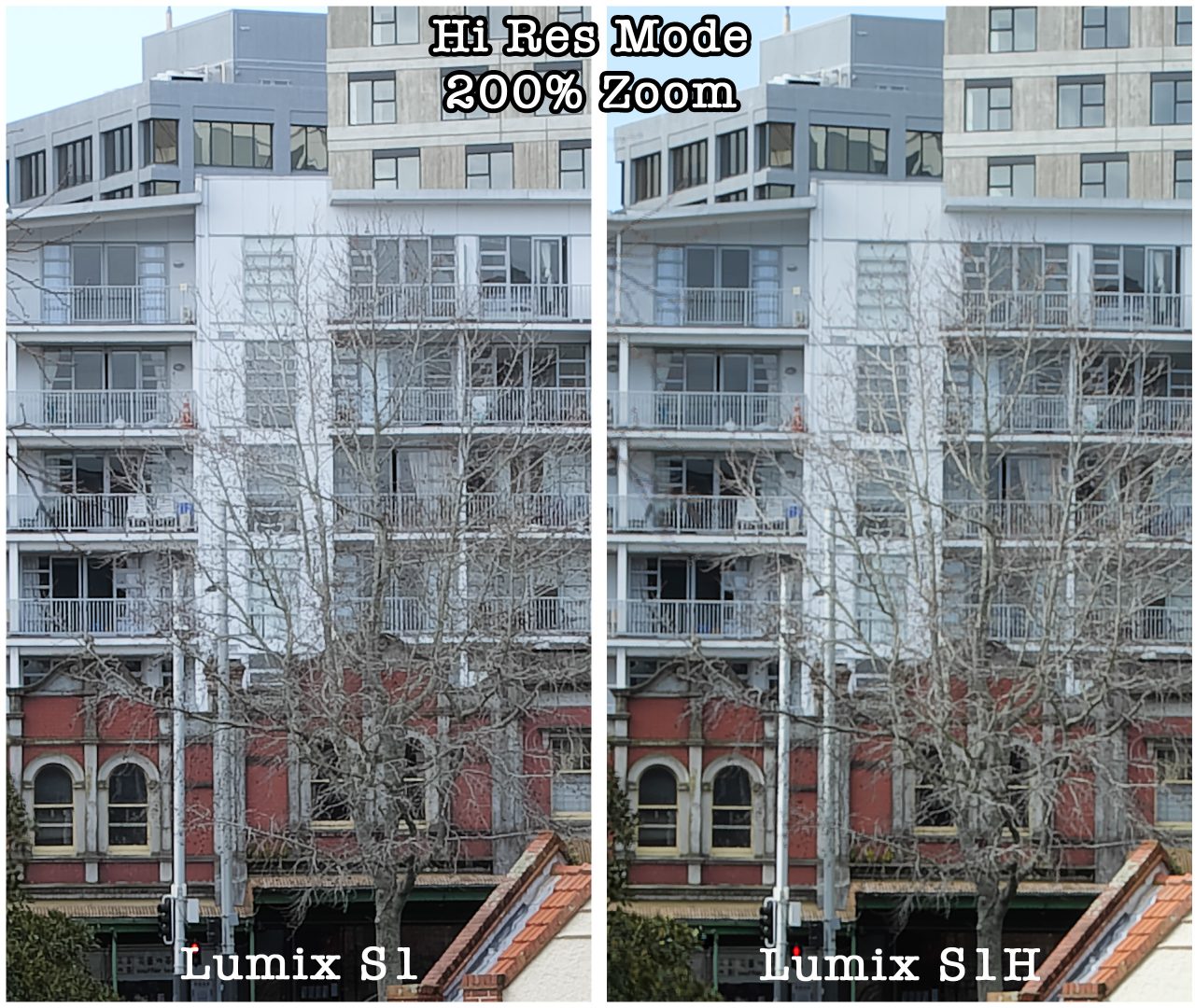
S1H In-Depth Hands-On
S1H Autofocus Test (vs Nikon Z6)
S1H Photo/Video High ISO Quality Test (vs A7III Z6 S1)
My video review is 45 minutes long and covers dozens of topics so I’m not going to type everything in this blog. So I do suggest you to watch the videos (there is also a time index for you to skip to the part you are interested in)
Update 3 Sept 2019:
I’ve just received the RAW reader for the S1H so I can finally compare the 96MP Hi Res photo I shot on the S1H vs S1. Below is the full photo (resized)

And here is a 200% zoom crop near the center of the frame


Comparing the photos at 200% zoom level, I can see the S1 does have a bit more sharpness and retain more fine details than the S1H. This is due to the Lumix S1H has a low pass filter while the Lumix S1 doesn’t have any. But while I can see the difference at 200% zoom, I won’t say there is a huge difference. Just enough for me to notice.
omparing the photos at 200% zoom level, I can see the S1 does have a bit more sharpness and retain more fine details than the S1H. This is due to the Lumix S1H has a low pass filter while the Lumix S1 doesn’t have any. But while I can see the difference at 200% zoom, I won’t say there is a huge difference. Just enough for me to notice.
Here is my conclusion after using a pre-production Lumix S1H for about two weeks.
When Panasonic created the GH5S, it was largely based on a GH5 and they more or less used a “Less is More” approach. They removed the IBIS, put in a lower resolution (even though slightly larger) sensor and the result is a slightly lighter camera, that is more videocentric and targetting the higher end video production market.
With the S1H, while it’s not exactly a GH5s, but in a lot of way, it’s quite similar. It’s mostly based on the Lumix S1, but make it more videocentric and also targetting higher-end video production market. But instead of less is more. they do the opposite approach. The Lumix S1H is basically a Lumix S1, with more improvements, more features, especially high-end features. And the result is a bigger, heavier but also the most versatile hybrid camera Panasonic has ever created. I would even call it the BEST hybrid camera ever in the market for professional or serious amateur users.
For documentary, wedding videographers or anyone who needs to shoot and move around quickly, the excellent IBIS/Dual I.S. system, improved DFD autofocus system and the ability to record amazing quality 10 bit 4:2:2 V-Log footage which makes the S1H a fantastic run and gun style camera.
And for videographers shooting under controlled environment or bigger production, you could connect the XLR audio adapter, external recorder to the S1H, sync up the time code with other cameras and this turns the S1H into a fantastic B-Camera for a big production, or a great A-Camera for a smaller production.
And if you are a hybrid shooter that also shoot quite a bit of photo, the S1H is always the same as the S1 which is an amazing stills camera. The only difference is the slight drop in sharpness due to the low pass filter but the difference is really tiny. The other difference is a lower buffer size but you do get unlimited 4k/6k photo mode in return.
The real “downside” of the S1H compared to the S1 is really just the larger size, a bit heavier and of course the higher price. But if you are someone who can benefit from any of the advanced video features offered by the S1H, it’s really a no brainer.
Just when other manufacturers have created their hybrid cameras that has caught up with the GH5, Panasonic brings out the S1H and tell us they are the real expert in this area.
With the S1H, Panasonic aims at a much higher-end market than any of its competitors. And they have created a beast that other manufacturers will need to spend years to catch up again.